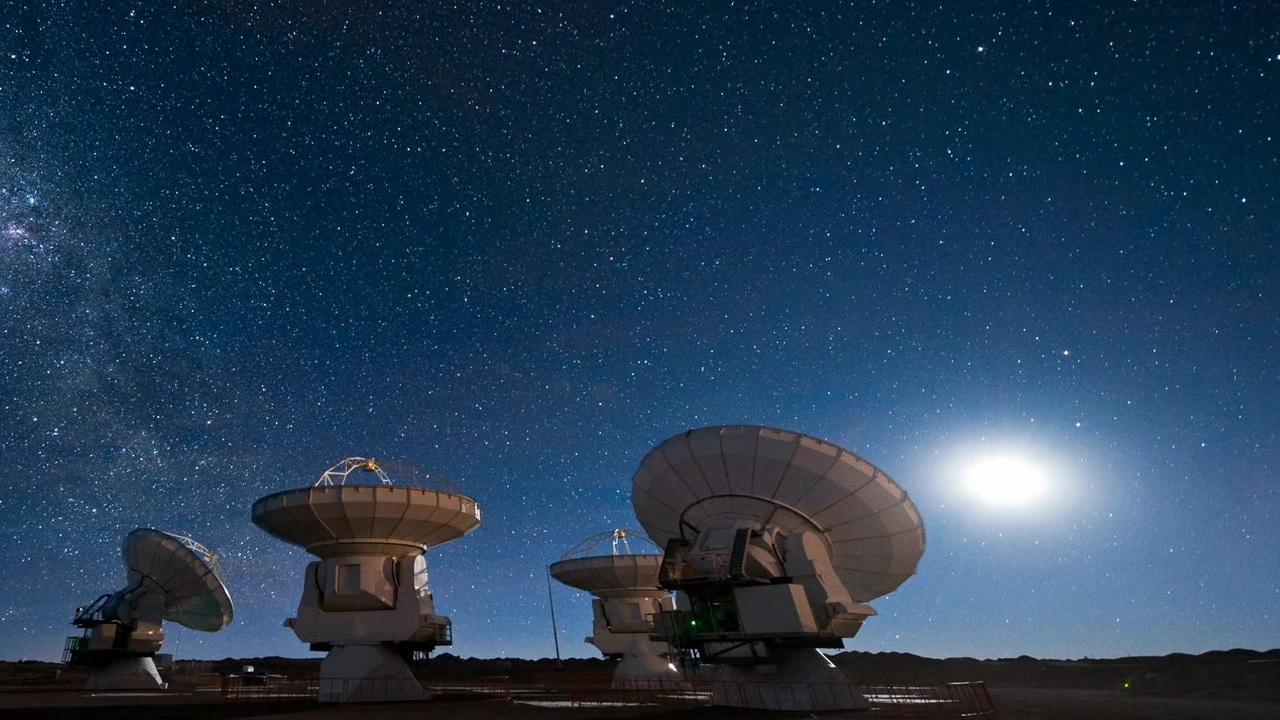The search for extraterrestrial life begins with a simple assumption: if intelligent life exists, then these beings must leave behind clues to their existence that would be recognizable to us.
For example, to a space-faring alien, a tell-tale sign of intelligent life existing on Earth could be that there are trace periodic elements present that can only form from nuclear fission. Fission is not generally known to occur naturally except under specific conditions, so it is logical that there is an unnatural explanation. "When you have eliminated the impossible, whatever remains, however improbable, must be the truth."
With this in mind, we count down the top reasons to believe that alien life is out there in the cosmos.
The default state is to hide -- for a good reason (like RKVs)
The idea that intelligent extraterrestrial life would be all about peace and love is a baseless hippie idea born out of hope and pseudo-spiritualism. If the universe is teeming with life, certainly many of them would have no regard for other forms of life -- and maybe even actively eliminate potential competitors.
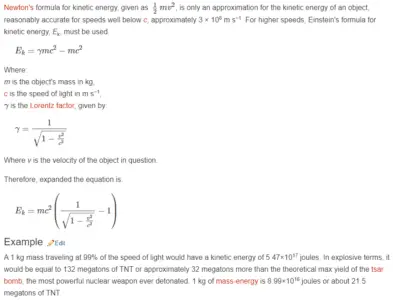
But consider the Relativistic Kill Vehicle (RKV), a conceptual weapon. Basically, an object is accelerated at some fraction of the speed of light, granting it an extraordinarily large amount of kinetic energy. You may know science-fiction examples of this idea in the form of the rail-gun. Even with a small mass and at low fractions of the speed of light, the object still possesses enough energy to absolutely dwarf atomic bombs.
And, what makes this weapon so dangerous is that it would be difficult to detect and intercept before it makes its mark. Even destroying the object might cause damage, since the debris would be traveling just as fast. The RKV may not even hit its intended target; the target could move, and then the RKV would strike some other object or continue hurtling through space for thousands, or millions, of years.
Many have wondered why the galaxy seems so quiet; that is, if there are lots of life-bearing planets out there, why have we not found any extraterrestrial civilizations? The relativistic kill vehicle may be the answer why.
Intelligent lifeforms may hide out of fear of these weapons, never broadcasting their existence to the galaxy at large. Indeed, in the event of war, the gloves would quickly come off and these insane missiles would wreak unimaginable havoc across the cosmos, vaporizing species in a split second.
Fast radio bursts
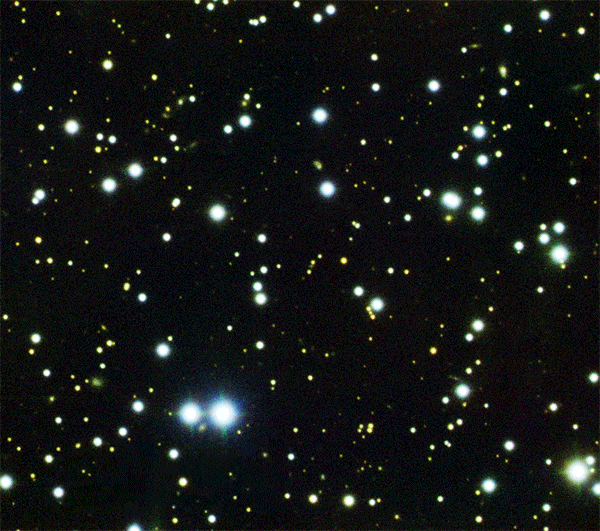
Astrophysicists at the Harvard-Smithsonian Center for Astrophysics hypothesize that the weird and unexplained phenomenon of "fast radio bursts" may be a sign of advanced alien technology. Newly published research suggests that extraterrestrials may be using massive amounts of energy to propel interstellar spaceships or probes.
"Fast radio bursts are exceedingly bright given their short duration and origin at great distances, and we haven't identified a possible natural source with any confidence," said theorist Avi Loeb. "An artificial origin is worth contemplating and checking."
First discovered in 2007, fast radio bursts are millisecond-long flashes of radio emission. Giant radio telescopes have detected fewer than two dozen FRBs since then, all of which point to galaxies far, far away -- many billions of light-years away from Earth. They're both incredibly hard to detect, and scientists are baffled by the phenomenon.
Harvard scientists Loeb and Manasvi Lingam say that a sufficiently advanced civilization could create enough power to fire large amounts of energy at the "sail" of a spaceship as a means of propulsion. We don't have the technology for it yet, but it is possible per the laws of physics.
The same concept was put forth by cosmologist Stephen Hawking and billionaire investor Yuri Milner, who proposed sending tiny "nanocraft" to nearby Alpha Centauri to probe it for exploration. In fact, a $100 million project called Breakthrough Starshot is currently underway to do just that. FRBs would be a magnified version of that, propelling much larger spaceships.
The Harvard scientists found that if the transmitter were solar powered, the sunlight falling on an area of a planet twice the size of Earth would be enough to generate the energy detected in FRBs. They say that the reason FRBs appear as bursts of energy and not a continuous stream is because "the sail and its host planet, star and galaxy are all moving relative to us. As a result, the beam sweeps across the sky and only points in our direction for a moment."
For now, Loeb says that all of this remains speculation, but there's no reason to rule out the possibility that they might be right.
"Science isn't a matter of belief, it's a matter of evidence," he said. "Deciding what's likely ahead of time limits the possibilities. It's worth putting ideas out there and letting the data be the judge."
The exponentially growing list of known Earth-like planets

(Image: © NASA/Ames/JPL-Caltech)
Scientists believe every one in five or so planets could meet the basic life accommodating criteria (life as we know it, any way) of being rocky planets in the Goldilocks zone, the region of the star system's orbit where temperatures are just about right for water to remain in a liquid state. But keep in mind that doesn't mean they would necessarily host beautiful oceans; consider the run-away disaster Venus, which was likely once Earth-like, but now averages a surface temperature of 461 C (861 F).
The count of Earth-like exoplanets is now in the thousands, so here's just a very small selection:
Proxima B
The closest exoplanet ever discovered, orbiting the red dwarf star Proxima Centauri every 11,186 days only 4.2 light-years from Earth. It has a minimum size of about 0.94 times Earth, and is very likely to be a liquid water ocean planet. Due to a tight orbit (one-twentieth of the distance from the Earth to the Sun), it receives 400 times more X-ray radiation than our planet. We will be able to send a probe here within this century.
Kepler-452b
1.6 times the size of Earth and used to be considered one of the most Earth-like planets found so far -- even its star is similar to ours. With a probable mass five times that of Earth, and its surface gravity twice our own, it is most likely a super-Earth with many active volcanoes due to its higher mass and density. The clouds on the planet would be thick and misty, covering much of the surface as viewed from space. 1,400 light-years away from us in the constellation Cygnus. At the speed of the New Horizons interplanetary space probe (launched 2006), about 59,000 km/h (37,000 mph), it would take approximately 26 million years to get there.
The TRAPPIST-1 System
A red dwarf star 39.6 light-years from the Earth, in the constellation Aquarius. It has no less than three planets in the Goldilocks zone.
Kepler 186f
The first validated Earth-like planet with a radius similar to Earth's (it's about 10% larger) to be discovered in the habitable zone of another star. Orbits the red dwarf star Kepler 186 once every 130 days and receives one-third the energy that Earth does from the sun. If you could stand on the surface of Kepler-186f, the brightness of its star at high noon would appear as bright as our sun is about an hour before sunset on Earth. NASA's Kepler space telescope detected it using the transit method, along with four additional planets orbiting much closer to the star. It lies about 582 light-years away in the constellation Cygnus.
GJ 1214b -- Waterworld
48 light-years from Earth in the constellation Ophiuchus. As of 2017, GJ 1214 b is the most likely known candidate for being an ocean planet, and so it has been nicknamed Waterworld by scientists.
Ross 128 b
Orbits an inactive red-dwarf star, meaning it's well protected from solar radiation. And the kicker: scientists have recorded strange signals coming from this system. "We realized that there were some very peculiar signals in the ten-minute dynamic spectrum that we obtained from Ross 128," wrote Abel Méndez, director of the Planetary Habitability Laboratory at the University of Puerto Rico at Arecibo. "The signals consisted of broadband quasi-periodic non-polarized pulses with very strong dispersion-like features. We believe that the signals are not local radio frequency interferences since they are unique to Ross 128 and observations of other stars immediately before and after did not show anything similar."
LHS 1140b
At seven times the mass of the Earth (and only 40 percent larger), this rocky super-Earth 40 light-years away from us is not somewhere you would want to vacation even if you could. But the density means that it will easily have kept a dense and warm atmosphere, a nice primordial soup ripe for life.
Our own solar system
Although Mars currently looks like a desolate wasteland (it once had oceans just like ours), it does still have water. Chances of finding something in some cavern or deep drilling sample seem good. Wikipedia has a terrific article on the possibility of life on Mars.
The sub-surface ocean moons around Jupiter and Saturn (Europa, Enceladus, Titan) are also great candidates for extraterrestrial life -- especially Cthulhu.
Tabby's Star
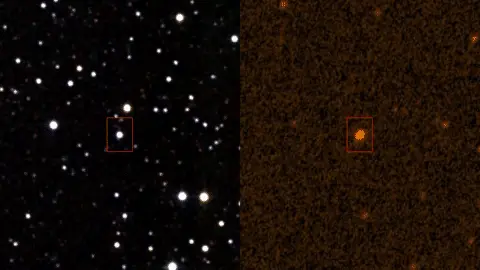
Consider Tabby's Star, or KIC 8462852 as it is known to astronomers. The star is located in the constellation Cygnus, 1480 light-years from Earth, and is famous for exhibiting an unusual fluctuation in light output that suggests the presence of an enormous alien megastructure.
Tabby's Star has been observed as early as 1890 but it did not show any changes in luminosity. On March 5 2011, Tabby's Star dipped in brightness by 15%, then on 28 February 2013 by 22%. If an object obscured the star, it would have to be up to half the star's width.
Many explanations for this event abound. The obscuring object could be galactic material coalescing around a star, or a planetary debris field from the star's system, pulled in by the great force of gravity.
Jason Wright, Professor of Astronomy and Astrophysics at Penn State, proposed that the object could be an extraterrestrial civilization's megastructure of a type called a Dyson Swarm in science fiction. Dyson Swarms are structures built around a star to harness the star's energy output. A very advanced civilization would need huge amounts of energy, and also have the logistical and scientific capabilities needed for such a project.
Future examinations of the star are planned. If Tabby's Star continues to dim — particularly in a pattern that may contain information—then it could be a bonafide sign of extraterrestrial life.
The Wow! signal
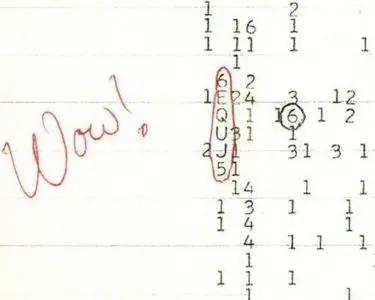
SETI, the Search for Extraterrestrial Life, is a research cooperative funded and staffed by many universities across the globe. One of SETI's most famous findings was the Wow! Signal, detected by Ohio State University astronomer Jerry Ehman in August 1977.
This unusually strong radio signal appeared to originate from the constellation Sagittarius and lasted for 72-seconds while OSU's Big Ear telescope could detect it.
This signal hasn't been found again despite dedicated search efforts. In these situations, scientists do not jump to conclusions (especially in a sensitive subject like extraterrestrial life). So, there were attempts to find a natural phenomenon that could cause such an event. Research indicates that the signal is unlikely to have come from Earth as its frequency band is reserved for astronomy, and it is also unlikely that it reflected off of space debris. A published paper's hypothesis states that the signal could have been caused by a comet.
Ehman himself believes that the signal was the product of an extraterrestrial civilization. If the intent of an intelligent being is to attempt to contact other life, it would make sense to communicate in a fashion both parties can understand. Curiously, the signal's frequency was found to be 1420.46 MHz, close to hydrogen's radiation intensity. Hydrogen is the periodic table's first element. Presumably, intelligent life must know chemistry as a result of scientific development, so this is one way to denote intelligence.
What is notable about the Wow! Signal is that it is just a signal; that is, it does not contain information. This is what makes it a signal and not a message. Could this event be akin to a galactic doorbell ring, a civilization making itself known to the galaxy?
A signal YOU detected?

SETI researchers alone cannot pour through the vast amounts of data they receive from their equipment, so, members of the University of California, Berkeley staff developed SETI@home. This project uses distributed computing to analyze radio signals detected from space. In layman's terms, SETI sends the data to volunteers of the project, whose computers are used to comb through the data. The volunteers then send the data back to SETI; this practice vastly reduces the amount of time needed to analyze data using borrowed computers.
In general, the software attempts to find potential signals amid junk data by searching for anomalies. These anomalies include spikes in signal intensity, which may mean the telescope moved over an artificial source; and pulsing signals, which are patterns in signal intensity.
This project allows you, the layman, to participate in the search for extraterrestrial life. And if you've ever heard that the odds of finding the needle in the haystack were low, you're wrong. SETI Institute Senior Astronomer Seth Shostak has stated that, according to the Drake Equation (an argument used to estimate the number of extraterrestrial, spacefaring civilizations in the galaxy), we will have a conclusive signal somewhere between 2020 and 2025.
Setting up SETI@home and the associated BOINC client is easy and tutorials are available. You can even set it up so it becomes your screen saver, and you can watch your computer examine data. If by chance the stars align, and the data sent to you contains the message we're all looking for, then let your computer do its work.
Two former US presidents are among the millions who have seen UFOs doing impossible things
One evening in 1969, two years before he became governor of Georgia, Carter was preparing to give a speech at a Lions Club meeting. At about 7:15 pm EST, one of the guests called his attention to a strange object that was visible about 30 degrees above the horizon to the west of where he was standing. In 1973 he filed a report of the incident to the International UFO Bureau, which is available as a pdf here. Carter's report indicates that it was witnessed by about ten or twelve other people, and was in view for ten to twelve minutes before it passed out of sight. Carter felt that the object was self-illuminated, and not solid in nature.
Carter frequently commented on the event. In 1973 he said this:
There were about twenty of us standing outside of a little restaurant, I believe, a high school lunch room, and a kind of green light appeared in the western sky. This was right after sundown. It got brighter and brighter. And then it eventually disappeared. It didn't have any solid substance to it, it was just a very peculiar-looking light. None of us could understand what it was.
From a 2005 interview:
All of a sudden, one of the men looked up and said, 'Look, over in the west!' And there was a bright light in the sky. We all saw it. And then the light, it got closer and closer to us. And then it stopped, I don't know how far away, but it stopped beyond the pine trees. And all of a sudden it changed color to blue, and then it changed to red, then back to white. And we were trying to figure out what in the world it could be, and then it receded into the distance.
Another time:
It was the darndest thing I've ever seen. It was big, it was very bright, it changed colors and it was about the size of the Moon. We watched it for ten minutes, but none of us could figure out what it was. One thing's for sure, I'll never make fun of people who say they've seen unidentified objects in the sky.
HowStuffWorks describes the Ronald Reagan UFO incident like this:
One night in 1974, from a Cessna Citation aircraft, one of America's most famous citizens saw a UFO.
There were four persons aboard the plane: pilot Bill Paynter, two security guards, and the governor of California, Ronald Reagan. As the airplane approached Bakersfield, California, the passengers called Paynter's attention to a strange object to their rear. "It appeared to be several hundred yards away," Paynter recalled. "It was a fairly steady light until it began to accelerate. Then it appeared to elongate. Then the light took off. It went up at a 45-degree angle-at a high rate of speed. Everyone on the plane was surprised. . . . The UFO went from a normal cruise speed to a fantastic speed instantly. If you give an airplane power, it will accelerate-but not like a hot rod, and that's what this was like."
Other notables who have seen UFOs: Congressman Dennis Kucinich, many astronauts.
The US government has recorded them and is taking them seriously
On several occasions over a six-day period in November 2004, the Nimitz Carrier Strike Group detected unidentified flying objects doing speeds and maneuvers impossible to our own level of technology. Fighter pilots eventually gave chase to one of them and the video has been released. It has become known as the "Tic Tac" UFO.
An infrared video recording by an F/A-18 of part of the incident shows a 40-foot-long white object flying erratically. Those who saw the UFO reported no visible form propulsion to keep the object airborne -- there were no wings and no apparent heat sources.
The United States government seemed to be equally as baffled because the infrared footage was kept secret for thirteen years until it was finally released in December 2017. And the US government might be keeping more footage top secret. The Navy's Office of Naval Intelligence responded to a FOIA request by saying the Navy had "discovered certain briefing slides that are classified TOP SECRET," according to Business Insider. The representative from the Navy's Office of Naval Intelligence claimed "the Original Classification Authority has determined that the release of these materials would cause exceptionally grave damage to the National Security of the United States."
Here's a documentary about the Nimitz encounters:
Interestingly, a former US Navy Senior Chief Operations specialist, a radar operator on the USS Princeton (part of the USS Nimitz Carrier Strike Group), believes that the Tic Tac ufos have always been around; that it was only due to a hardware upgrade that they were able to pick up on them.
The sheer scale of the universe
Without even multiple universe type theories, consider the absolutely mindboggling scale of our known universe and the gazillions of lottery tickets that scale represents for all kinds of weird life. How can they NOT exist?
Related: These are the signs you've been abducted by aliens, according to UFOlogists
 DMT Has Friends For Me Shirt $21.68 |
 |
 DMT Has Friends For Me Shirt $21.68 |

